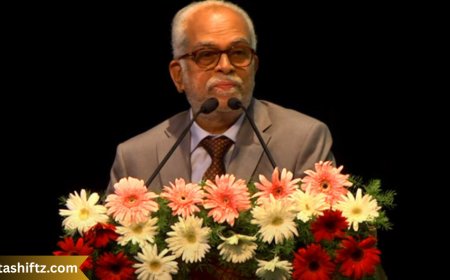"Trump–Zelensky Meeting: A New Chapter in Ukraine Peace Talks"

Introduction
On August 18, 2025, a consequential diplomatic moment unfolded at the White House: U.S. President Donald Trump hosted Ukrainian President Volodymyr Zelenskyy, alongside prominent European leaders. This high-stakes meeting—preceded by Trump’s discussions with Russian President Vladimir Putin—sparked renewed hope for a breakthrough in the Russia–Ukraine conflict. At the core of the dialogue were security guarantees for Ukraine, international coordination, and the possibility of a trilateral summit with Putin. This meeting captured global attention as both a diplomatic gamble and a potential turning point in geopolitics.
Meeting Highlights and Strategic Significance
Key Takeaways
Security Guarantees and Diplomatic Coordination
-
Trump promised that the U.S. would help guarantee Ukraine's security, with European allies taking the lead role on the ground.
-
Zelenskyy expressed optimism, noting promises of formalized security guarantees within 10 days.
Trilateral Peace Summit Potential
-
Trump announced he had begun arrangements for a Putin–Zelenskyy meeting to be followed by a trilateral summit involving himself.
-
European leaders—including PM Keir Starmer, President Macron, Chancellor Merz, and others—backed such trilateral dialogues conditional on a ceasefire.
Ceasefire Debate
-
Trump downplayed the immediate need for a ceasefire, suggesting it might not be strategically optimal despite acknowledging its humanitarian appeal.
-
European leaders, however, stressed that a ceasefire is essential prior to meaningful negotiations.
Breakdown Table: Meeting Overview
| Focus Area | Discussion Details |
|---|---|
| Security Guarantees | U.S. pledged support; Europe to shoulder primary burden; formalization expected within 10 days. |
| Peace Negotiations | Trump arranging Putin–Zelenskyy summit; possible trilateral meeting. |
| Ceasefire | Trump noncommittal; European leaders insist ceasefire is a prerequisite. |
| European Involvement | Leaders from UK, France, Germany, Italy, Finland, EU Commission and NATO attended, pushing for collective defense model. |
| Diplomatic Tone | Zelenskyy upbeat; Trump presented as facilitator; Putin reportedly open to direct talks. |
Meeting Dynamics and Context
1. Diplomatic Atmosphere
This gathering contrasted sharply with earlier encounters; Zelenskyy later reflected that this was perhaps the "best conversation yet" with Trump. European dignitaries rallied behind Zelenskyy's call for robust security guarantees reminiscent of NATO's Article 5.
2. Trump’s Strategic Position
Positioning himself as the architect of peace, Trump emphasized speed—suggesting that outcomes might either materialize within weeks or continue indefinitely. He also resumed direct contact with Putin during the session, underscoring urgency.
3. European Leaders' Perspective
European heads of state portrayed the event as a "historic step," acknowledging shifts in Russia's posture and recognizing Trump’s diplomatic leverage. German Chancellor Merz said Putin agreed to a meeting within two weeks. The EU’s Ursula von der Leyen summed it up as a joint effort to “stop the killing.”
List of Strategic Implications
-
Renewed Peace Pathway
Potential diplomatic breakthrough after years of deadlock. -
Security Architecture Evolution
Possible shift toward a U.S.–Europe coordinated defense plan for Ukraine. -
Diplomatic Reinvigoration
Multilateral unity emphasizing collective security and urgency. -
Potential Russian Engagement
Putin’s openness to dialogue opens new negotiation avenues. -
Humanitarian Considerations
Ceasefire debates underscore the humanitarian urgency behind geopolitical decisions.
Subheading: Reactions and Outlook
Global Response
-
Ukraine: Zelenskyy hailed progress and pledged Ukraine’s readiness for bilateral and trilateral engagement.
-
Europe: Public reactions ranged from cautious optimism to advocacy for binding security agreements.
What Comes Next?
-
Security Agreements: Formalizing within a week or so as promised by Trump and Zelenskyy.
-
Ceasefire Aspirations: Pushed by European leaders, likely a condition before summit.
-
Trilateral Coordination: Trump’s model of involving himself in talks could shape outcomes—but hinges on Russian compliance.
-
Public Sentiment: Intensifies focus on ensuring any deal protects Ukraine’s sovereignty without compromising on peace.
Conclusion
The Trump–Zelenskyy meeting of August 18, 2025, marked a rare diplomatic pivot point. With U.S. security commitments, Europe’s unified backing, and the potential for direct talks with Putin, the meeting stitched together a fragile yet hopeful path toward conflict resolution. While the future remains uncertain, the next steps—security frameworks, ceasefire expectations, and diplomatic sequencing—are decisive. This meeting might just be the spark that reshapes geopolitics—or a fleeting moment in a longer, more complex journey.






























